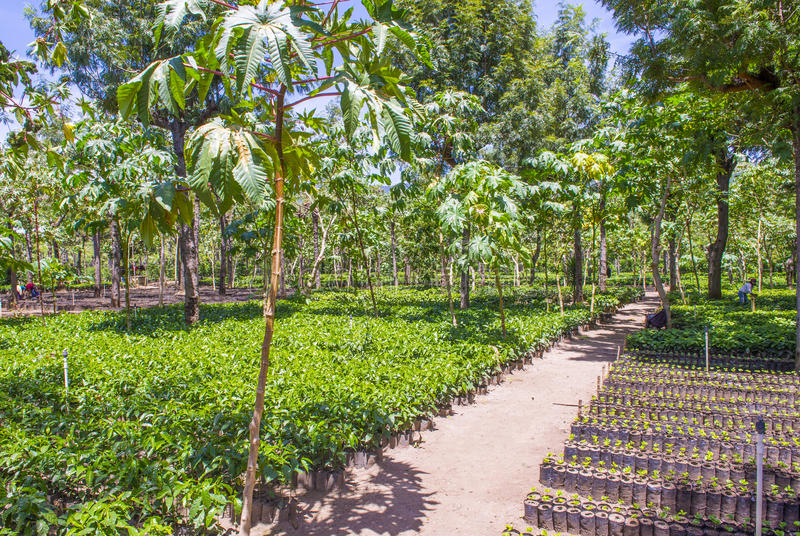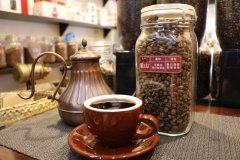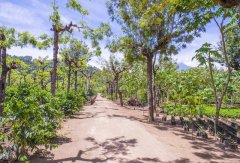Guatemalan coffee once enjoyed a reputation as the best quality coffee in the world. Why did it go downhill?
Professional coffee knowledge exchange more coffee bean information please follow the coffee workshop (Wechat official account cafe_style)

Guatemalan coffee
A brief history of la coffee:
The earliest literature points out that Guatemala knew how to grow and drink coffee as early as 1747.
With the establishment of the Coffee planting and Promotion Committee in 1845, coffee became an important cash crop in the area.
With the vigorous promotion of the government, coffee accounted for 90% of Guatemala's total export in 1880.
In order to achieve greater production, the authorities targeted the aboriginal land, forcing them to sell the land and move to more barren places.
The second exploitation came from large enterprises during the Great Depression of the global economy in 1930.
Jorge Ubico, the authority, strives to reduce costs in order to stimulate the export market.
At the same time, it also transfers more power and land to the United Fruit Enterprise Center (UFC) in the United States.
After Jorge Ubico stepped down, the incoming president, Arbenz, wanted to reclaim some land in UFC and redistribute it to farmers.
In 1954, the Arbenz government was overthrown by a coup launched by CIA of the CIA.
Poverty, uneven distribution of land, famine, discrimination against indigenous peoples and other factors led to civil war (1960-1966)
However, these problems still exist today.
Guatemala Coffee Mini File:
In terms of the main varieties of coffee, 98% is Arabica, but there are still 2% robusta varieties.
The treatment method is mainly washing and a small amount of it is in the sun. It is currently the 10th largest coffee producer in the world.
The extra-hard coffee beans here are full-grained, delicious and balanced, and the coffee made with them is pure and rich. Guatemala coffee once enjoyed a reputation as the best quality coffee in the world, but its quality also declined for a time. What is gratifying, however, is that its reputation is gradually being restored.
In 1750, Father Jesuit introduced coffee trees to Guatemala, where the coffee industry was developed by German colonization at the end of the 19th century. Today, most of the coffee industry's production takes place in the south of the country. Here, the slopes of Sierra Madre volcano provide ideal conditions for growing high-quality coffee beans, and coffee growing at high altitudes is full of vitality. Compared with other kinds of coffee, tasters prefer this mixed flavor coffee with spicy flavor. The extra-hard coffee beans here are a rare good coffee with full grains, delicious taste and balanced acidity. In addition, Guatemala has attracted a lot of attention because of its giant coffee beans. The coffee industry, which once boomed the country, still dominates the national economy. Unfortunately, the domestic political situation is not good for coffee growers. High output is usually a sign of a country's overall economic prosperity.
However, coffee production in Guatemala has declined relatively, at 700kg per hectare, while that in El Salvador is 900kg per hectare and that in Costa Rica is even more astonishing, at 1700 kg per hectare. The export of Guatemalan coffee is controlled by private companies, but the National Coffee Council (Asociacion Nacional de Cafe) controls other sectors of the coffee industry. At present, some of the best quality coffee from Guatemala is exported to Japan, where each cup of coffee sells for $3 to $4. Most small-scale producers are descendants of the Mayan, who like to call cups local.
At present, they are also benefiting from a US-funded project, which locals call "The Project", which plans to invest US $2.5 million to encourage the opening of small, high-quality coffee plantations. The main areas rich in high-quality coffee in Guatemala are Lake Attilan (Lake Atitlan) and Huehuentenango. The purpose of the project is to help restore the vicious circle of high yield and low quality that has plagued the world coffee industry. For example, Bourbon trees grow taller and produce fewer coffee beans than the new dwarf trees. Although they all belong to Arabica coffee varieties, bourbon trees produce better coffee beans and are more popular with gourmets. The project also hopes to encourage local producers to process their own coffee beans, because most of the coffee fruits are now sold to middlemen, and if coffee processing can be done in local factories, its value and even quality may be improved.
Antigua (Antigua) is also a famous producer of coffee. Coffee in Antigua is produced in Hacienda Carmona, where the best quality coffee is EL Pulcal, which is not only of good quality, but also has a stronger flavor, richer taste and stronger tobacco flavor than other Guatemalan coffees. Every 30 years or so, the area near Antigua is hit by a volcanic eruption, which provides more nitrogen to the already rich land, and plenty of rainfall and sunlight make the place more suitable for growing coffee. Other coffee producers include San Marco, Oriente & Coban, Palcya, Mataquescuintia and La Uman in Zacapa. The establishment of the Special Coffee Association means that the Government of Guatemala has begun to pay attention to high-quality coffee, and the efforts made for it will soon bear fruit.
Guatemalan coffee features:
Guatemala also has tropical rain forests, volcanic geology, plateau valleys and ever-changing microclimate.
Plus several rainfall patterns and fertile soil
It makes Guatemalan coffee varied in style and rich in tonality.
There are slender, elegant, sweet, fruity, but also more complex, rich, rich, with chocolate, toffee aromas.
Important Notice :
前街咖啡 FrontStreet Coffee has moved to new addredd:
FrontStreet Coffee Address: 315,Donghua East Road,GuangZhou
Tel:020 38364473
- Prev

Is it true that the title of Blue Mountain Coffee is Blue Mountain? Can you drink its characteristics?
Jamaica Coffee Is Jamaica Blue Mountain Coffee the Best Large Coffee in the World? Almost everyone who has heard of Jamaica Blue Mountain Coffee knows that it is the most expensive coffee in the world, but not everyone knows why. Like Rolls-Royce cars and Stradivarius violins, when something
- Next

The trial results of the five major coffee producing areas in Guatemala can be selected and tasted according to their preferences.
Professional coffee knowledge exchange more coffee bean information please pay attention to the coffee workshop (Wechat official account cafe_style) there are generally five major coffee producing areas in Guatemala: Huehuetenango: the highest altitude, low rainfall, late ripening, fruit and flower flavor, recognized as the best coffee producing area. Antigua: dry climate, sweet coffee, with
Related
- Does Rose Summer choose Blue, Green or Red? Detailed explanation of Rose Summer Coffee plots and Classification in Panamanian Jade Manor
- What is the difference between the origin, producing area, processing plant, cooperative and manor of coffee beans?
- How fine does the espresso powder fit? how to grind the espresso?
- Sca coffee roasting degree color card coffee roasting degree 8 roasting color values what do you mean?
- The practice of lattes: how to make lattes at home
- Introduction to Indonesian Fine Coffee beans-- Java Coffee producing area of Indonesian Arabica Coffee
- How much will the flavor of light and medium roasted rose summer be expressed? What baking level is rose summer suitable for?
- Introduction to the characteristics of washing, sun-drying or wet-planing coffee commonly used in Mantenin, Indonesia
- Price characteristics of Arabica Coffee Bean Starbucks introduction to Manning Coffee Bean Taste producing area Variety Manor
- What is the authentic Yega flavor? What are the flavor characteristics of the really excellent Yejasuffi coffee beans?

